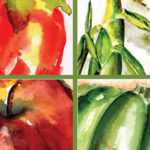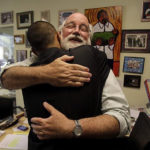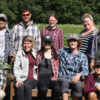Kind people are asking me how my time was in California and I’m not sure how to respond yet. 17 days of learning, sharing, hiking, field tripping, observing, storytelling, absorbing — it’s hard to sum up. I am full of good things. I am digesting. I am grateful for new and renewed friends, new and renewed words.
It started last fall when I saw an announcement come through from our friends over at Bartimaeus Cooperative Ministries: a permaculture design certificate course, combined with theological reflection. I’d been interested in permaculture for some time, aware that it could, quite literally, help significantly shape the land of which I’m a steward, which includes the four acres at the Huss Project. I’d dabbled in some of the foundational and peripheral texts in my work at a local retreat center. I was already convicted of the reality of our interconnectedness with the natural world and our responsibility to tend and keep as humanity careens toward an unstable future, but I was hungry for more — more skill, more knowledge, more holistic understanding.
The course wove together so many themes, with a complexity akin to that of a thriving forest: restorative justice, bioregional discipleship, Sabbath economics, food justice, ecosystem regeneration. We sang, we read the biblical narrative, we ate good food, we dreamed about a flourishing future for ourselves and our communities, and we began to learn about ways we could help make that future sprout in our places. Imagine a world where none of God’s creatures go hungry, where soil is alive, where water is welcomed with the reverence of a people whose story began with a spirit, brooding over the deep. Permaculture is not just a set of clever gardening tricks. It’s not even a strategy for sustainability. It’s a design discipline that reaches toward the flourishing — the shalom — of all creation, and I look forward to seeing how it will begin to regenerate my imagination and my land.
Last modified: March 4, 2020





